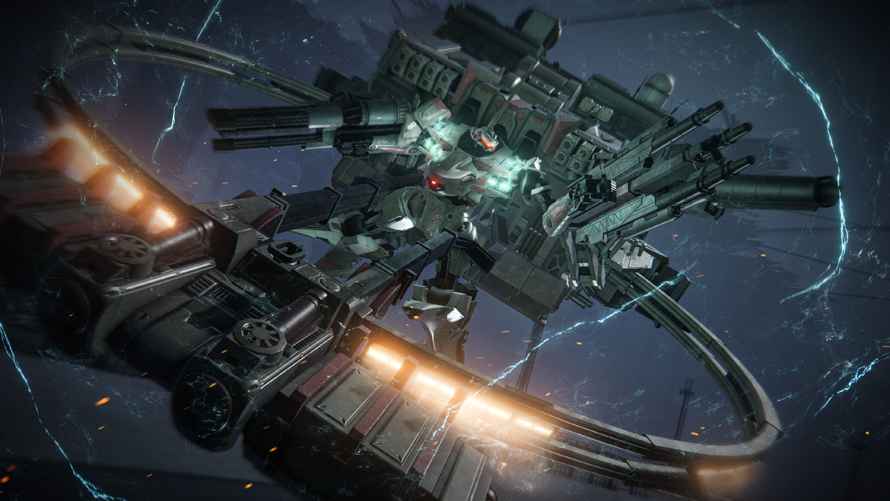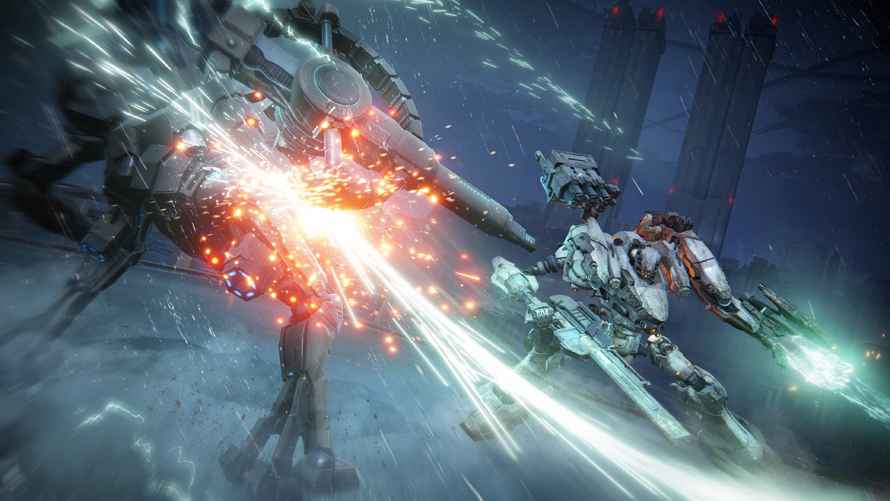Armored Core VI Fires of Rubicon Preview
For gamers whose entire familiarity with FromSoftware comes via Elden Ring, Dark Souls, or Sekiro, it may come as a surprise to learn that the Japanese studio was built on the massive shoulders of mechs. Specifically, a storied franchise called Armored Core. Since 1997, there have been a staggering 15 Armored Core titles. The most recent, Armored Core V, was released on the Xbox 360 over ten years ago. At long last, the developer will soon release Armored Core VI Fires of Rubicon.
Throughout the last decade, FromSoft has focused on the now iconic Soulsborne games. It’s a series that has literally defined a genre of action RPGs and Metroidvanias. But there was always an intention of returning to the beloved fighting mechs. And now, FromSoftware finally has. Magnificently.
I had the privilege of attending a hands-on playtest in Anaheim, CA. I and several dozen journalists played — and replayed — through the game’s long first chapter and boss. We got to experience the game’s many systems and got a real taste of Armored Core’s mission styles and level design. Some of us also got to pilot a real-life mech, but that’s a different story.

I can pretty confidently say that fans of the past Armored Core games will be thrilled by AC VI. Newcomers can expect a challenging, yet accessible, introduction to the series.
Mobile Mecha Mega Fun
Armored Core VI — like all the games since 1997 — is a third-person action game in which the player controls highly mobile, highly customizable mecha. These aren’t the lumbering mechs of Pacific Rim or the earthbound mechs of Mechwarrior. Instead, the mechs in Armored Core feature 360 degrees of movement. You will be gliding around and flying above enemies, and they will be doing the same to you.
In addition to their absolutely fantastic mobility — linked to near-perfect controls and animations — mechs in Armored Core VI have an endlessly deep system for customization. Nearly every part of your mech — from guns, rockets, and swords to legs, heads, and torsos — can be modified and upgraded by purchasing new gear in the shop. Of course, you can also make purely cosmetic changes to your mech as well.

Having the ability to swap out parts and reconfigure your mech — called your Assembly — before battles is one of Armored Core’s most important systems. There are environments and bosses that are built around specific weapons. For example, one early boss is nearly impossible to beat without vertical missiles that hit enemies from above. As with most FromSoftware games, relative ease or difficulty doesn’t come from a setting or slider. Grinding, leveling, and upgrades — not to mention, developing skills — are keys to mastery.
It doesn’t take too long for Armored Core’s controls to become second nature, though players with Dark Souls’ controls lodged deep in their muscle memory will need some adjustment time. Balanced between ranged attacks from guns, rockets, and missiles to powerful melee attacks, combat feels very satisfying.
Satisfying Sorties
Mission and level design is one area where Armored Core really diverges from Soulsborne games. Throughout the campaign, players will have a choice between replayable missions, called sorties. They range from bite-sized encounters to multi-stage, puzzle-like battles. Even in the game’s opening chapter, there was an incredible variety of environments, enemies, and objectives.

One mission, for example, was a relatively compact assignment to destroy a series of rocket turrets spread around a sprawling industrial complex. While Armored Core VI is not an open-world game, there is a lot of flexibility and creativity around how to complete missions. Another, much more complex sortie involved bringing down a massive, Titan-like war machine. It brought together everything the player had learned so far and especially focused on verticality and solving some timing-based puzzles. FromSoftware games are known for balancing challenge and reward. The equation is definitely baked into Armored Core VI.
We haven’t talked much about the game’s story, about the fight for a rare and powerful resource called Coral. For one thing, the demo only revealed a part of it, essentially a retelling of the player character’s origin story and setting up the conflict. For another, while the narrative is not unimportant, the game’s focus is more on action than brooding NPCs or telling an opaque, mystical tale. Armored Core’s tone ranges from serious drama to more tongue-in-cheek, military swagger. It’s definitely worth paying attention to, even as the battles rage around you.
Save the Date
Having discovered the brilliance of FromSoftware games, players coming to Armored Core VI directly from Elden Ring will be delighted to find the developer’s trademark polish, creativity, challenge, and pacing intact in a different genre. While the changes to mechanics from earlier Core games might seem heretical at first, they’re overall solid improvements.

From Demon’s Souls through Elden Ring, FromSoftware has assembled a track record of games praised by critics and worshipped by fans. From the handful of hours I was able to spend playing the game, Armored Core VI will do nothing but further enhance the developer’s string of hits. Gamers familiar with the franchise will find Armored Core VI to be a perfect return to Rubicon, the kind of AC they dreamed about over ten years ago. For everyone else, Armored Core VI will be the gateway into a new and exciting genre.
Thank you for keeping it locked on COGconnected.

